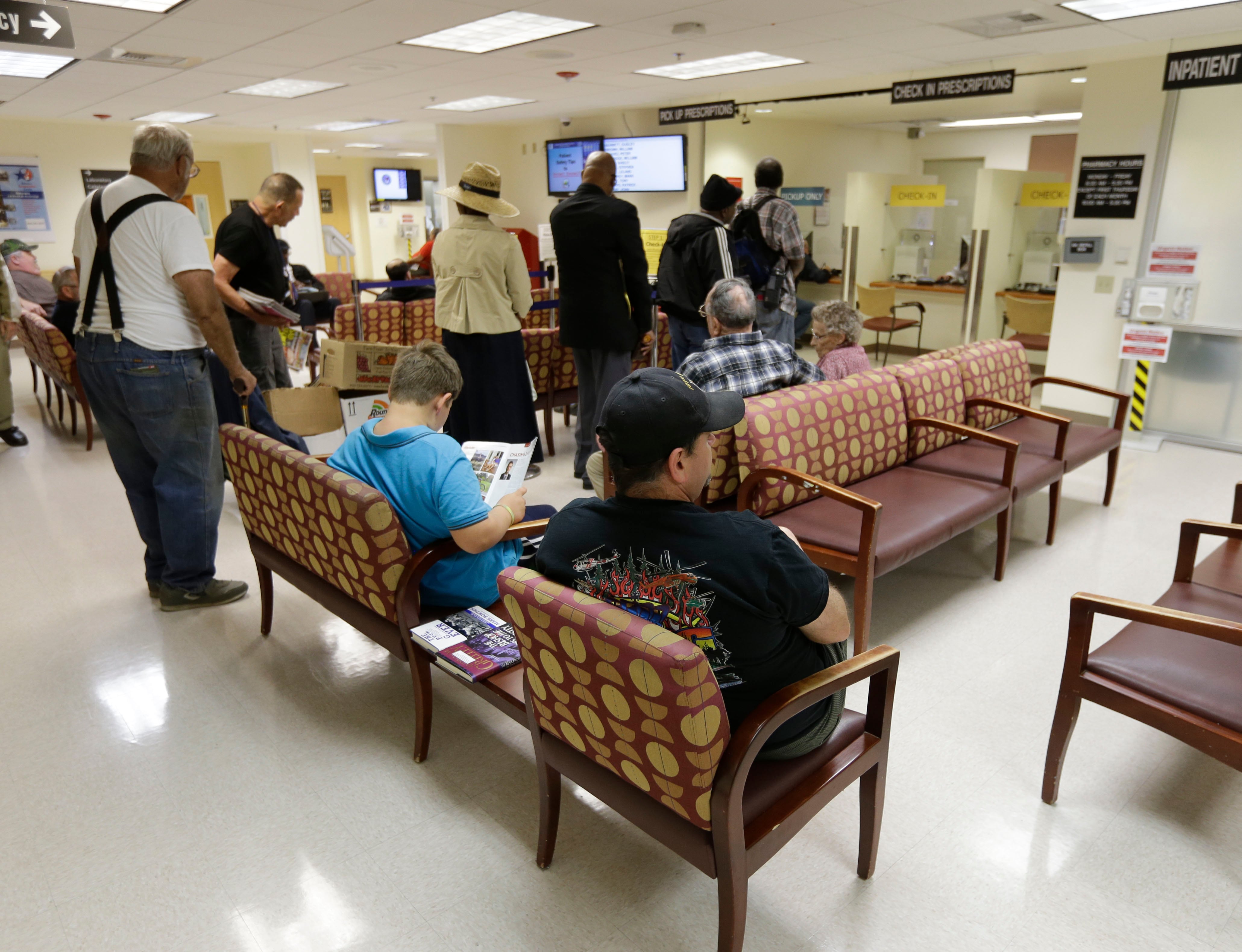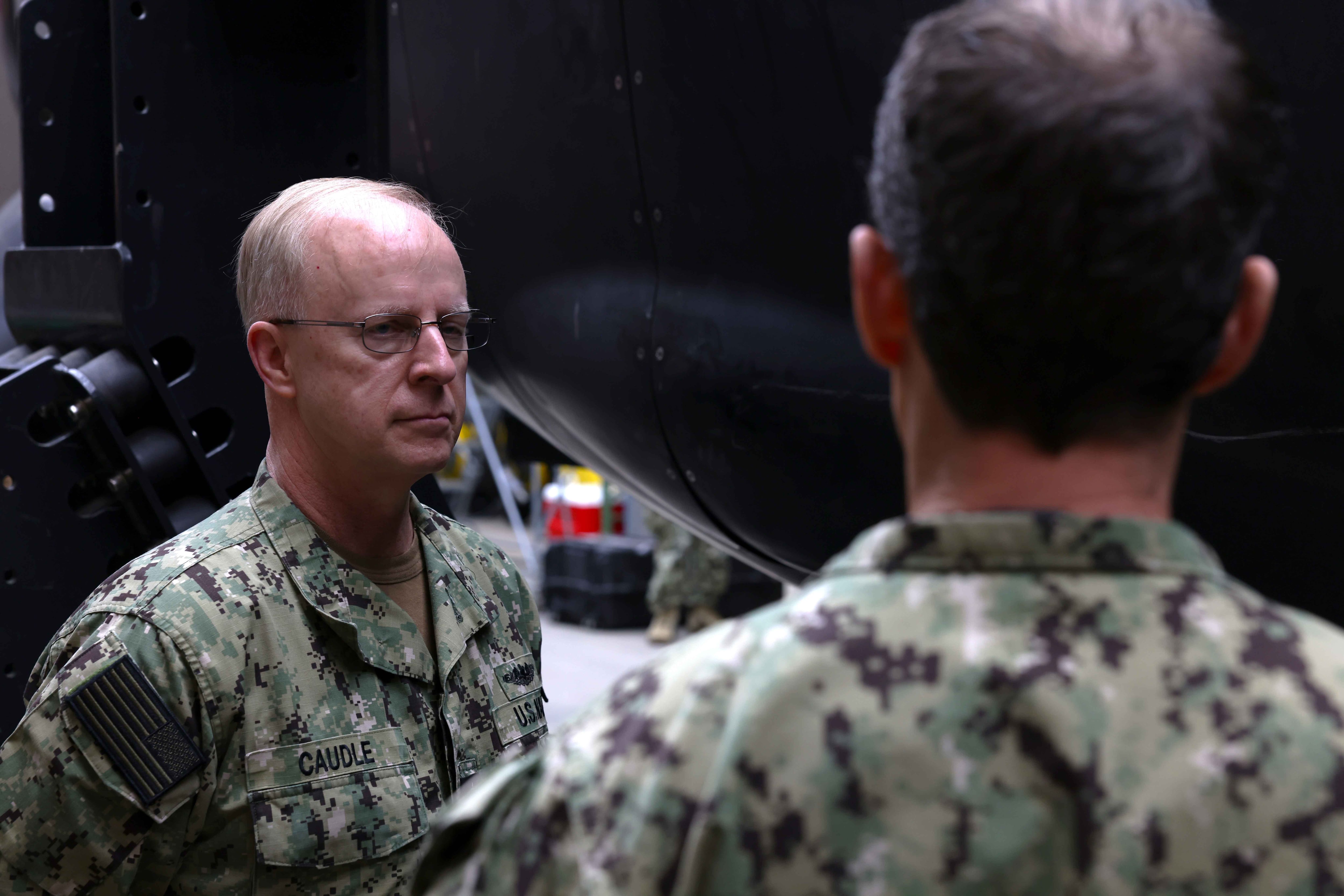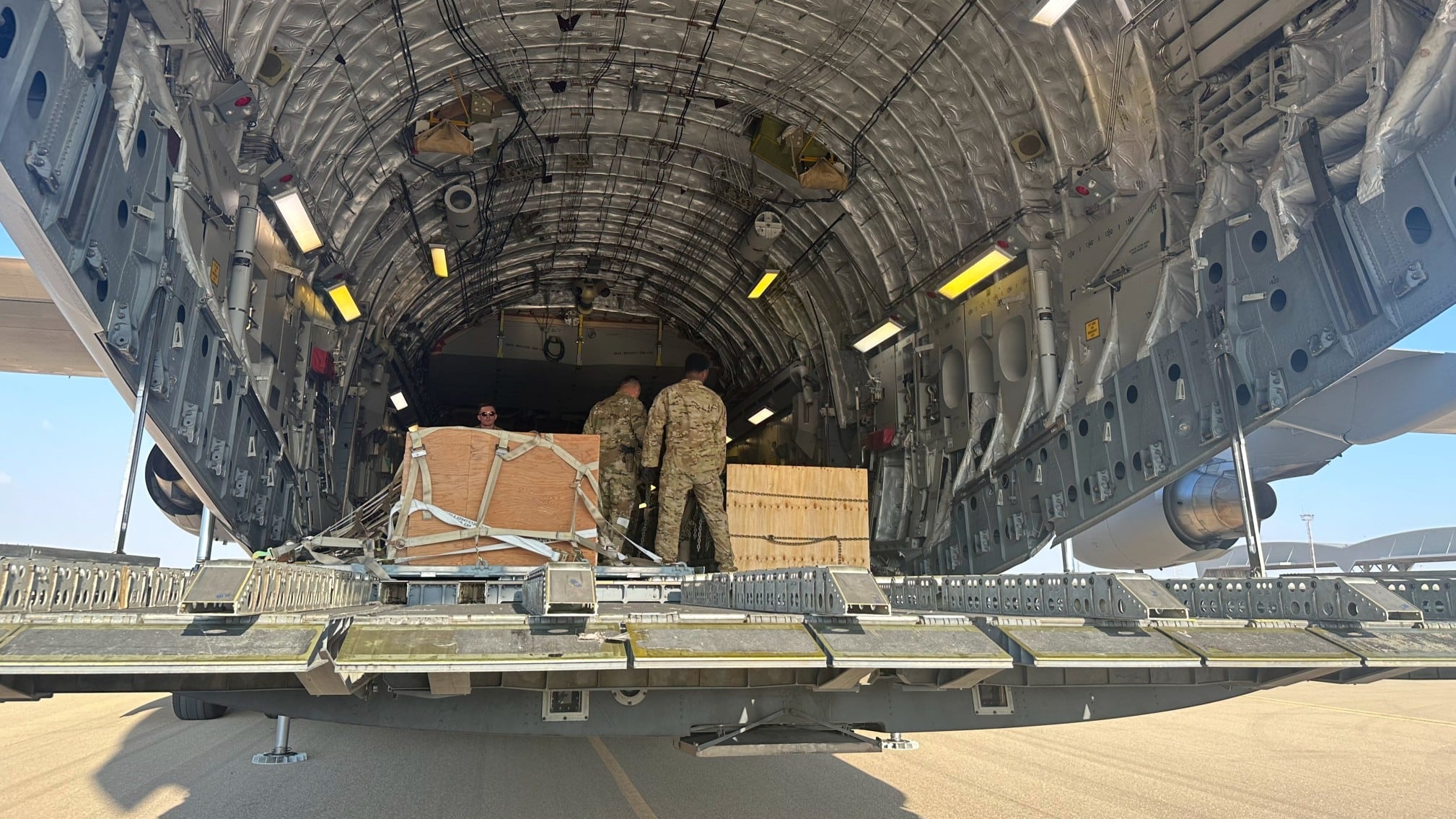Army Alaska is kicking off a massive winter training exercise Wednesday at Donnelly Training Area, about 120 miles from Fort Wainwright, Alaska, according to Army officials.
The multinational event will be the service’s first-ever home station combat training center rotation conducted in Alaska, thanks to help from the Joint Pacific Multinational Readiness Center and observer coach/trainers from Fort Polk’s Joint Readiness Training Center.
The 25th Infantry Division’s 1st Brigade Combat Team and their Stryker vehicles will take on an opposing force of paratroopers from the division’s 1st Battalion, 4th Brigade Combat Team, who will simulate a near-peer opponent, according to Army Alaska.
Other participants include Canadian forces — paratroopers from their 2nd Division and helicopters — and HIMARS rocket artillery from the Washington-based 17th Field Artillery Brigade. In total, roughly 8,000 troops will join in the rotation.
The scenario will begin with 1st BCT deploying their Strykers from Fort Wainwright to the training area before moving into situational force-on-force training exercises. The rotation will also feature a combined arms live fire event, according to Army Alaska.
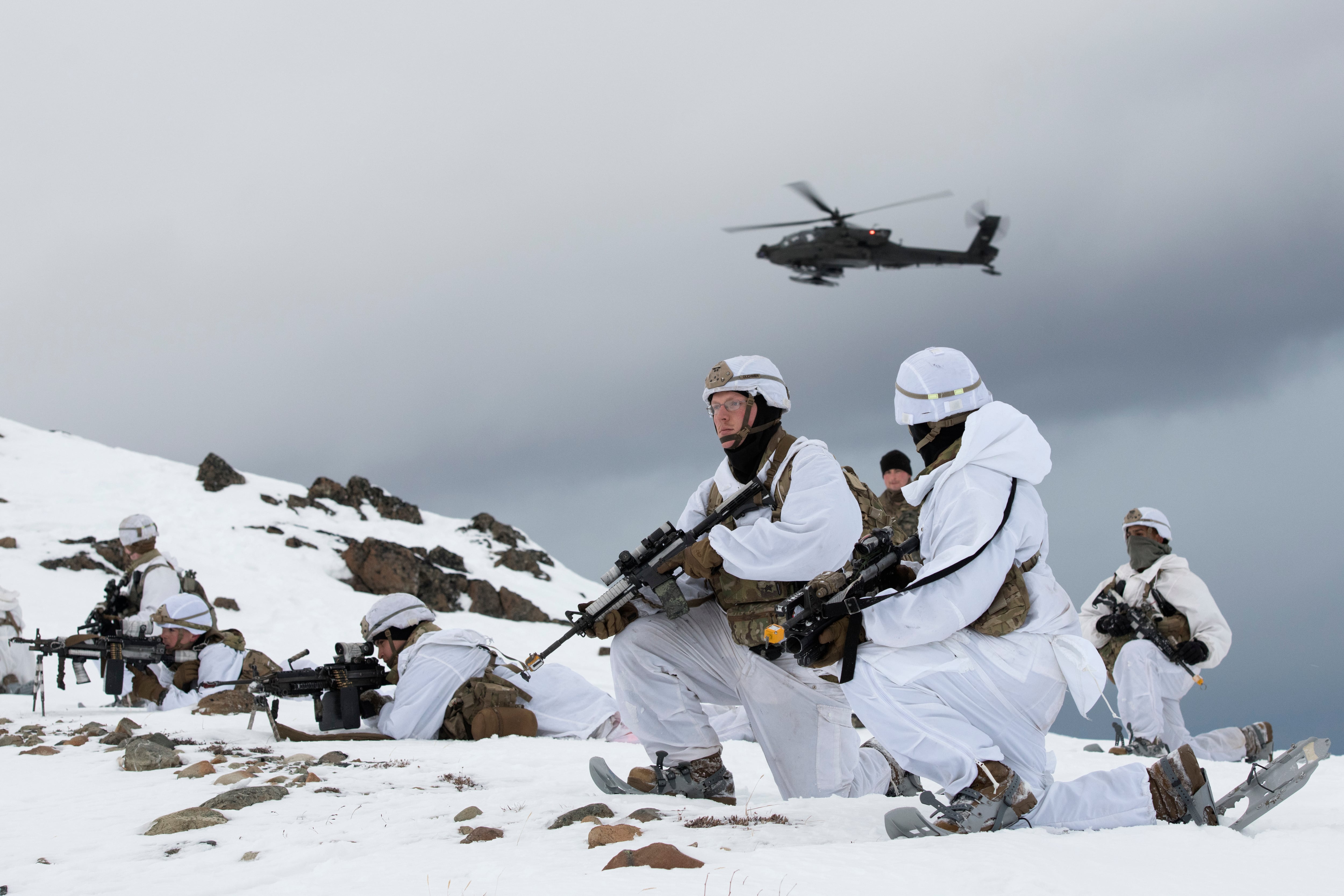
In a video statement, Army Alaska commander Maj. Gen. Brian Eifler indicated that the rotation is “what we’re going to do every year here.”
“Alaska gives us a unique opportunity to train in areas where we’re going to need to survive and thrive — and potentially fight — in Arctic regions, in extreme cold weather temperatures around the world,” Eifler added.
The weather looks like it will cooperate with that intent, too.
Donnelly Training Area, near Fort Greely, is under a Winter Storm Warning from the National Weather Service that begins Wednesday night. The forecasters call for up to 14 inches of snow that will put the brigade’s winter transport capabilities to the test.
The future of Arctic force structure in the balance
Previous training events in Alaska — like the brigade’s 2016 exercise or the biennial Arctic Edge event — didn’t satisfy the Army’s requirement for most brigades to complete a combat training center rotation before a deployment, explained Army Alaska spokesperson John Pennell.
Alaska- and Hawaii-based units would previously have to ship all of their equipment to either the National Training Center in California or JRTC at Fort Polk, Louisiana, to satisfy that readiness requirements. Senior Army leaders have explained that the new approach could lead to significant cost savings.
RELATED
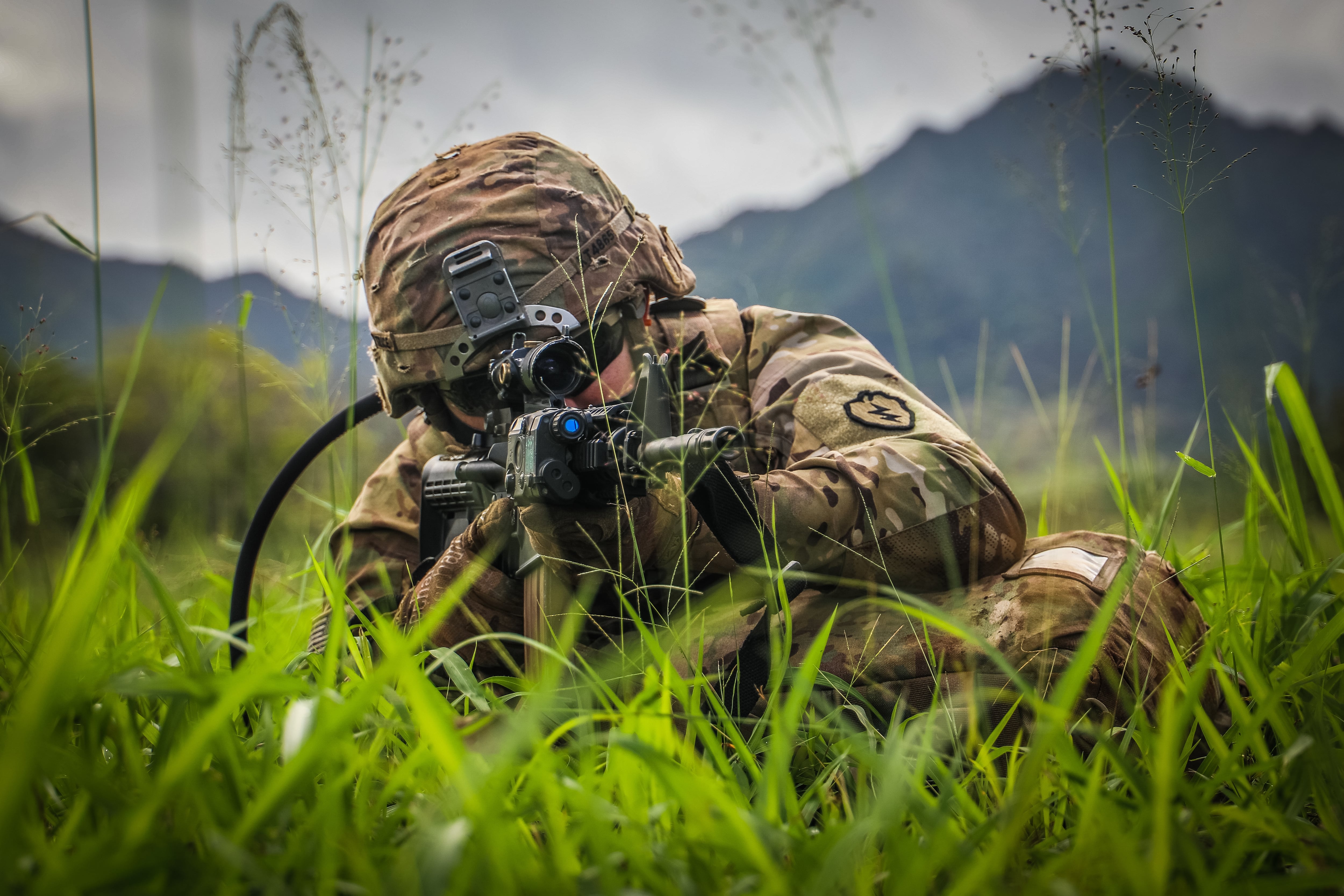
An Army Alaska release on the rotation said it will validate the brigade’s “cold weather readiness and capabilities [and] current equipment cold weather capability” in addition to providing command planners information on whether current equipment sets are suitable for Arctic warfare.
The latter objective comes amid a service-level reevaluation of what combat capabilities it wants to have to support its new Arctic strategy. Army Chief of Staff Gen. James McConville reflected on the rotation’s significance Wednesday in remarks at the Center for Strategic and International Studies.
“We have a Stryker brigade up there. We’re seeing [if] that [is] the right type of brigade,” for the Arctic mission, said McConville. “Are we better to have an Arctic brigade that is equipped to operate in the environment rather than [just] be based in the environment?”
RELATED

McConville said the possible changes — which could include “putting a multidomain task force” in Alaska— are motivated by the service belief that the Arctic is “going to be a place that’s competitive and we want to make sure we have the troops that are trained and equipped to operate [there].”
The service’s Maneuver Center of Excellence and Army Alaska officials have created a draft plan for an Arctic-specific brigade that would be a virtually self-sustaining version of a Stryker Brigade Combat Team. At a Fort Benning, Georgia, conference in October, planners laid out a concept that included more infantry and mobile, turreted mortars, in addition to dedicated communications, electronic warfare and cyber teams.
The chief will make the ultimate decision on what force structure future Arctic units will have.
The Army and Defense Department have also invested more in recent years in Arctic-specific research and development, including announcing the Ted Stevens Center for Arctic Security Studies. They’ve also tried to improve conditions for troops there, who have faced a persistent mental health crisis, including additional pay and incentives for troops who choose to serve in Alaska.
Military Times editor-at-large Todd South contributed to this report.
Davis Winkie covers the Army for Military Times. He studied history at Vanderbilt and UNC-Chapel Hill, and served five years in the Army Guard. His investigations earned the Society of Professional Journalists' 2023 Sunshine Award and consecutive Military Reporters and Editors honors, among others. Davis was also a 2022 Livingston Awards finalist.

